#kabylia
Text

Landscape by Azazga, Kabylia region of Algeria
French vintage postcard
#tarjeta#postkaart#sepia#historic#landscape#photo#postal#briefkaart#photography#kabylia#vintage#ephemera#algeria#ansichtskarte#old#postcard#french#azazga#region#postkarte#carte postale
9 notes
·
View notes
Text
My grandma wants me to go Algeria this summer but idk how looking like a fag in some African mountain would work out for me (she lives in a mountain-y area)
#oran or kabylia or something#id go but i dont wanna know how homophobes my family back there could be like im not cutting my hair or nothing#like i guess id getbaway with it for being European and whatever but still
2 notes
·
View notes
Text

“Methods dating back to the Roman era are still employed in the production of pottery by women of the Kabylia and Aures mountains. Pottery, jewelry, and woven works are very popular in the open-air markets.”
34 notes
·
View notes
Note
Those woke westerners are the same people who lie about how “North Africa was black until the Greeks and Arabs came in and mixed in with or replaced the native population” even though it’s so easy to disprove like there are literally Wikipedia articles on North African genetics citing gene studies that find that the modern population of North Africa is descendant from people who have been there for 16,000 years with very little mixing especially as far west as Morocco.
Then everyone’s like “then why are some North Africans lighter” (or
more likely just “why are North Africans lighter” because they tend to ignore and erase those North Africans who are dark-skinned like… maybe because North Africa is… farther North. My friends. My comrades. It’s literally just farther from the equator. Of course you’re gonna get blond people in Kabylia.
Anyways my point is that when Americans claim the North African population was replaced or displaced by Arabs not only are they embarrassing themselves by spreading easily disproved misinformation but they’re actively contributing to the erasure of Amazighs, modern indigenous North African peoples / populations, who are heavily oppressed by their governments.
.
#not adding anything to this as i am less knowledgeable#not greece related#cleopatra discourse#anti-netflix#berbers#anon#mail
40 notes
·
View notes
Text
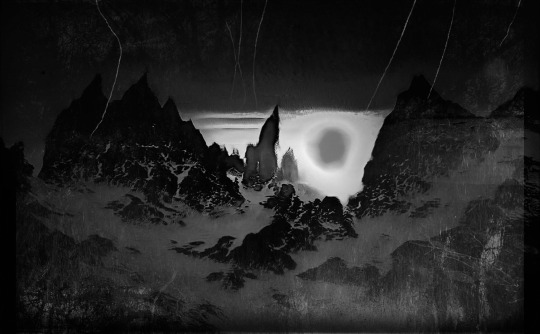









Kabylia 120223
a long time ago
i tried to walk along the north african coast
from rabat to tunis
and ended up in Tizi Ouzou
reconstructed memories
65 notes
·
View notes
Text

Chapter 6. Revolution
A revolution that is many revolutions
Many people think that revolutions always follow a tragic course from hope to betrayal. The ultimate result of revolutions in Russia, China, Algeria, Cuba, Vietnam, and elsewhere was the establishment of new authoritarian regimes — some worse than their predecessors, others hardly different. But the major revolutions of the 20th century were carried out by authoritarians who intended to create new governments, not abolish them. It is now obvious, if it wasn’t before, that governments always uphold oppressive social orders.
But history is full of evidence that people can overthrow their oppressors without replacing them. To do so, they need reference to an egalitarian culture, or explicitly anti-authoritarian aims, structures, and means, and an egalitarian ethos. A revolutionary movement must reject all possible governments and reforms, so as not to be recuperated like many of the rebels in Kabylia and Albania. It must organize in flexible and horizontal ways, ensuring that power is not permanently delegated to leaders or anchored down in a formal organization, as happened with the CNT in Spain. Finally, it must take into account that all insurrections involve diverse strategies and participants. This multitude will benefit from communication and coordination, but it should not be homogenized or controlled from a central point. Such standardization and centralization are neither desirable nor necessary; decentralized struggles such as those waged by the Lakota or the squatters in Berlin and Hamburg have proven capable of defeating the slower-moving forces of the state.
A new ethos can come about in the process of resisting, as we find common cause with strangers and discover our own powers. It can also be nourished by the environments we build for ourselves. A truly liberating ethos is not just a new set of values, but a new approach to the relationship between the individual and her culture; it requires that people shift from being passive recipients of culture to participants in its creation and reinterpretation. In this sense, the revolutionary struggle against hierarchy never ends, but continues from one generation to the next.
To be successful, revolution must occur on many fronts at once. It won’t work to abolish capitalism while leaving the state or patriarchy untouched. A successful revolution must be composed of many revolutions, accomplished by different people using different strategies, respecting each another’s autonomy and building solidarity. This will not happen overnight, but in the course of a series of conflicts that build on each other.
Unsuccessful revolutions are not failures unless people give up hope. In their book on the popular rebellion in Argentina, two UK activists close with the words of a piquetero from Solano:
I don’t think December 2001 was a lost opportunity for revolution nor was it a failed revolution. It was and is part of the ongoing revolutionary process here. We have learnt many lessons about collective organizing and strength, and the barriers to self-management. For many people it opened their eyes to what we can do together, and that taking control of our lives and acting collectively whether it’s as part of a piquete, a communal bakery or an afterschool club dramatically improves the quality of our lives. If the struggle stays autonomous and with the people the next uprising will have strong foundations to build upon...[113]
#organization#revolution#anarchism#daily posts#communism#anti capitalist#anti capitalism#late stage capitalism#anarchy#anarchists#libraries#leftism#social issues#economy#economics#climate change#anarchy works#environmentalism#environment#solarpunk#anti colonialism#acab
5 notes
·
View notes
Text
Preparing for the High Holy Days in Algiers
As the first fruits of they year appeared in the street markets, Jewish housewives busied themselves preparing festive dishes, jams and jelly for the High Holy Days. The chidren enjoyed waffles, biscuits and ice cream. Caroline Elisheva Rebouh shares her memories of childhood in Algiers in the Morial newsletter (With thanks: Leon):
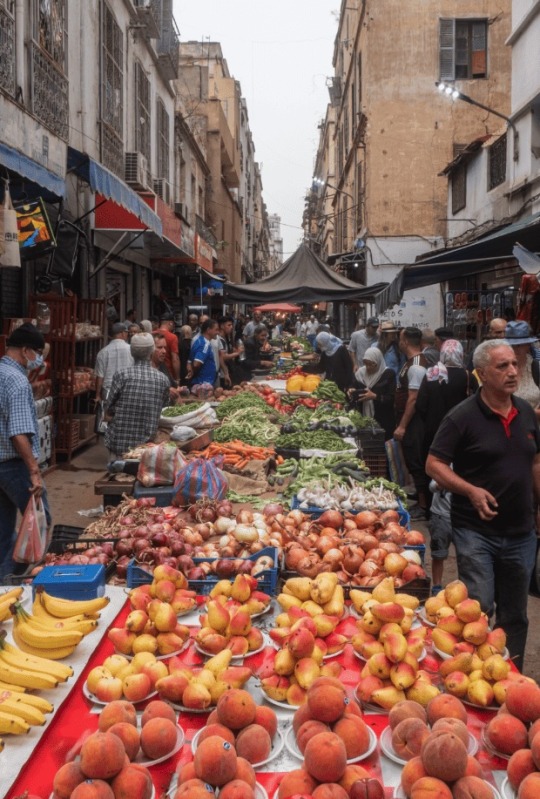
Algerian street market
In the last days of the summer holidays, mothers were busying themselves with the household chores in readiness for the Jewish High Holy Days of Rosh Hashana, Yom Kippur and Succot.
The families gathered around festive meals. They needed to prepare traditional dishes in advance for guests to sample, and especially pre-prepared confectionery and pastries. At the time, few of us had a refrigerator.
The markets overflowed with fruit of all kinds: housewives selected quinces, white-flesh sweet potatoes, figs, and pinkish grapes.
The quinces were chosen carefully to be almost sure that they were not “visited” by unwanted worms. They were rinsed, peeled and cut into quarters – hard to do as the fruit was hard. The seeds were removed and reserved separately for jam and quince jelly. People loved it at the end of the Yom Kippur fast!
The fruits were boiled to soften the flesh so that the sugar syrup seeped into the flesh of the fruit and the sugar remained clear. It was during this operation that the seeds (quince cores) were added so that the pectin let the syrup gel. Some of the boiled quinces were cooked over low heat. During the prolonged simmering, sugar was added in small quantities, while the mix was stirred to make a fruit paste.
The figs were also quickly turned into a light-coloured and appetizing jam.
The grapes: we chose a variety called “bou amar” : the grapes were round, relatively large and pink. Mothers armed their children with fresh feathers to deseed the grapes. The jam was also pinkish and pleasant, and some mothers would wrap the seeds of the grapes in fresh compresses to make jelly.
A little later there would appear small apples of a very pale green and with light pink spots on the side which were used for the Rosh Hashanah seder and which were called Kabyle apples. Small white and pink peaches with firm, tender and fragrant flesh were also called Kabyle (Berber) – no doubt coming from Kabylia.
In Algiers, we children ignored the entire selihoth period. We only experienced the season through the pleasure of tasting small amounts of candy floss, fine biscuits and other delights.
During and at the end of summer, small stalls “flowered” on street corners: the yaouled (children or young teenagers) offered us freshly-picked prickly pears which they peeled with dexterity and presented them on fig tree leaves so that our little fingers did not touch the thorns. Other yaouled offered grilled corn on the cob: we savoured them on the benches in the public gardens where we played with our cousins, neighbors and classmates.
From time to time, we gathered around small confectioners who tempted us with sugar of different colours which they sold in small quantities. We sucked them by holding them between our fingers and then crunched our teeth on them.
The waffle merchants announced their passage by waving wooden boards with handles on both sides. festooned with mini-shutters which tinkled with a dry and dull sound.
At that time we liked our waffles a little thicker than ice cream cones. They were rolled up in cones and stacked in a sort of cylinder about one meter high. The merchant placed it at ground level to serve his young customers.
But fine biscuits weren’t the only popular waffles: at Grosoli, a popular ice cream parlor in Algiers, the ice cream cups were decorated with a fan or a fine rolled biscuit.The Bitone company also marketed what were called “funny wafers” : they carried short slogans like “You won” or “I love you”.
When many years later we found ourselves in Marseille, we could no longer find ice creams like those of Algiers.
Read article in full
14 notes
·
View notes
Text
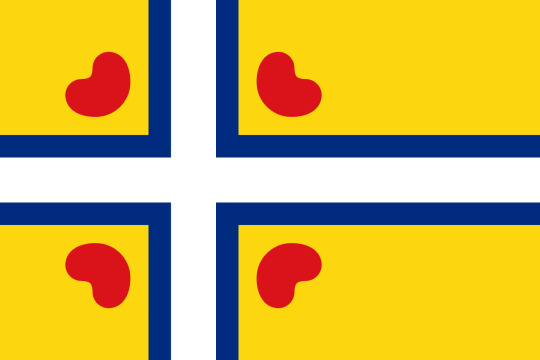

Flag Wars Bonus Round
8 notes
·
View notes
Text
Also it’s funny when yt ppl imply that all of North Africa is the Sahara bc Kabylia literally looks like this:

7 notes
·
View notes
Text
An Amazigh separatist movement in Algeria has enlisted an American lobbyist based in Morocco to help it make a case for support from US officials and lawmakers built on concerns over Algiers' deepening ties to Russia and harsh crackdown on pro-democracy protests.
The Movement for the Autonomy of Kabylia (MAK), whose leadership is based in Paris, calls for independence for the predominantly Amazigh region in Algeria's northern mountains.
According to registration documents filed this week at the US Department of Justice, MAK has recruited Elisabeth Myers, an American lawyer, to represent it in Washington. The contract was signed on 25 June. Myers registered as a lobbyist using an address in Marrakech on the same day.
“Activities will involve promotion of US friendship with Kabylia, along with an understanding of the region, its people, and the impact of the Algerian government's strong-arm tactics over the region,” the documents say.
MAK has already secured meetings with two US lawmakers’ offices. On Thursday, Kabylie independence leader Ferhat Mehenni will meet virtually with senior officials from Democratic Senator Tim Kaine’s office and Democratic Congressman Don Beyer, a source familiar with the matter told Middle East Eye.[...]
After Russia’s invasion of Ukraine, the US made a bid to pull Algeria away from Moscow’s orbit. US Secretary of State Anthony Blinken visited the country in March 2022 as part of a wider trip to the region that included a stop in Morocco. A US spokesperson said Blinken vowed to "broaden and deepen the [US] relationship with Algeria."
But Algiers has proven resistant. In June, Algerian President Abdelmadjid Tebboune met Putin on a visit to Russia designed to strengthen cooperation between the longtime allies.
Western countries have had more success gaining access to Algeria’s massive gas reserves. US energy giants Chevron and Exxon are nearing a deal that would allow them to drill in the country for the first time, Algeria’s energy minister told the Wall Street Journal earlier this month.
But European countries’ rush to find alternatives to Russian gas has also empowered Algeria, which has replaced Russia as the top gas supplier to Italy, and is now shopping around for Italian-made military hardware.
It is also locked in a rumbling dispute with Spain over the status of Western Sahara which has brought non-energy trade between the two countries to a halt.[...]
The separatist group's bid for influence in Washington could prove to be an indicator of the future direction of Washington’s wider relations with Algeria, a major North African exporter of gas and oil.
Algeria designated MAK a terrorist organisation in 2021. Authorities accused the group of working with Morocco and Israel to start deadly forest fires in the Kabylia region. MAK and Morocco denied the allegations.
A 2021 US State Department terrorism report called the terrorism label “more political than security focused,” adding that Algerian authorities refrain from discussing the group or its threats with their US counterparts.[...]
Algeria hosts and supports the Polisario Front, a rebel movement that established the self-declared Sahrawi Arab Democratic Republic in 1973 in the disputed Western Sahara, which Morocco annexed in 1975 after the end of Spanish colonial rule.
The US unilaterally recognised Moroccan sovereignty over the territory in exchange for Rabat's normalisation of ties with Israel.
Amazighs [...] are an ethnic group scattered across Algeria, Tunisia, Morocco and Libya whose roots in the region predate the Arab conquest of North Africa.
Amazighs are believed to account for about 20 percent of Algeria’s 44 million population. Their culture and language have historically been suppressed by the Algerian government. Amazigh activists played a prominent role in the Hirak movement.
29 Jun 23
8 notes
·
View notes
Text
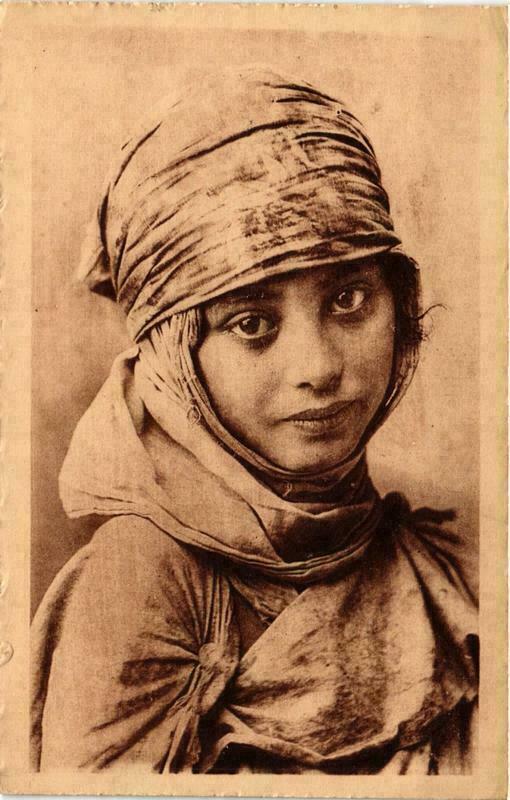
Moorish girl from the Kabylia region of Algeria
French vintage postcard
#tarjeta#postkaart#sepia#historic#girl#photo#postal#briefkaart#photography#kabylia#vintage#ephemera#algeria#ansichtskarte#old#moorish#postcard#french#region#postkarte#carte postale
5 notes
·
View notes
Photo



The Kabyle people (Kabyle: Iqvayliyen) are a Amazigh ethnic group native to Kabylie (or Kabylia) in the north of Algeria, one hundred miles east of Algiers. They represent the largest Amazigh-speaking population of Algeria and the second largest in Africa. Emigration, influenced by factors such as the French conquest of Algeria, deportation, and latterly industrial decline and unemployment, resulted in Kabyle people being found throughout the world. Large populations of Kabyle people settled in France and, to a lesser extent, Canada.
Kabyles speak the Kabyle language and, since the Berber Spring of 1980, have been at the forefront of the fight for the official recognition of Amazigh languages in Algeria.
9 notes
·
View notes
Text
#NowPlaying: "Premiere: Elisa Elisa - Kabylia - Nulu Music" by Electronic Groove
#Nowplaying#Newmusic#SoundCloud#Electronic#House#Afro#Tech#Deep#Organic#hip hop#rnb#electronic#jazz#lofi
3 notes
·
View notes
Text
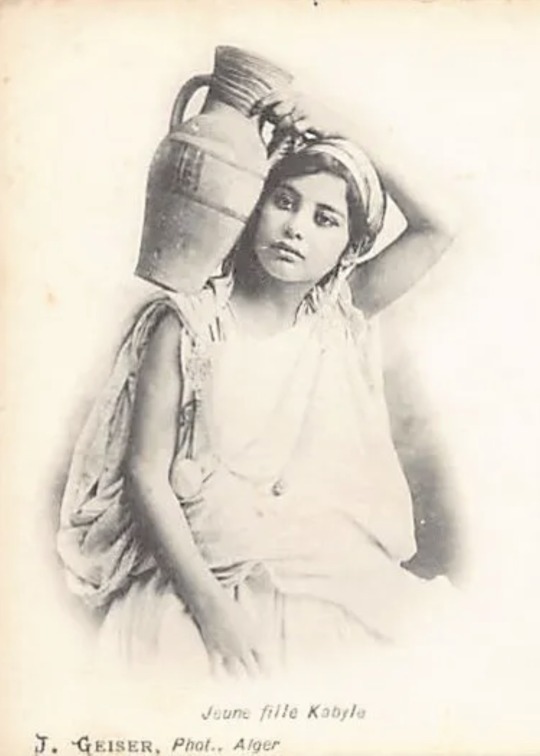
“Algeria - Kabylia - Young Kabyle Girl.” c.unknown
Ph: J. Geiser
4 notes
·
View notes
Video
youtube
Younes Adli: “Place and role of Kabylia in the Amazigh space”, Mon...
2 notes
·
View notes
Text

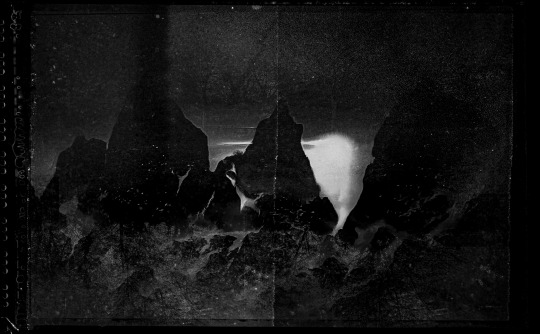








kabylia 200323
a long time ago i tried to walk along the north african coast from rabat to tunis
and ended up in kabylia where i spent 6 months
just finished sorting 10k photos from then
www.cfriel.com/kabylia
reconstructed memories
34 notes
·
View notes